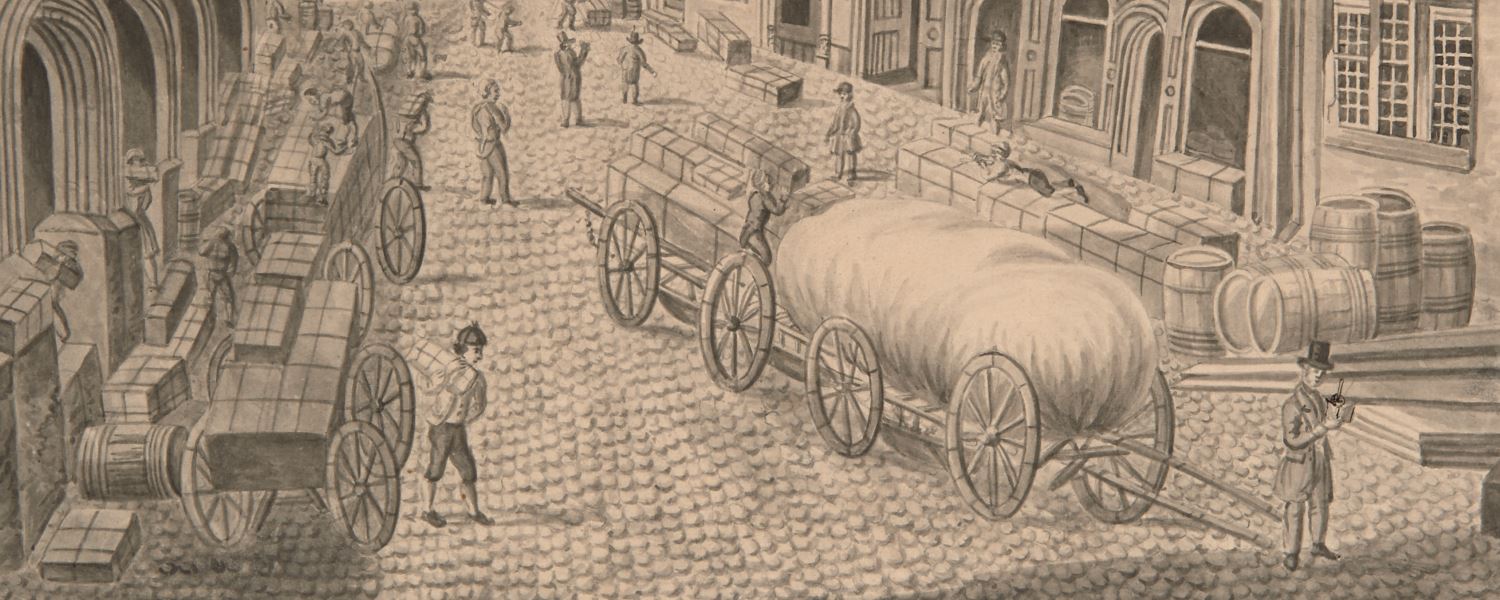
The interior of the old Kaufhaus in Basel (unknown date) – picture detail
An especially large part of the advertisements in the Avisblatt are those concerned with material things. They were placed by professional as well as semi- or non-professional sellers. These ads referred to things lost or found, to things for rent, to things for sale and advertised a great variety of goods; for example second-hand objects like old furniture and used clothing, newly invented or already well-known medical products, imported goods like coffee and tea in different qualities or a variety of printed cottons available at a specific shop or market stand.
Using these classified advertisements as its main source, this sub-project by Anna is interested in the development of material culture and the economic and political preconditions and social practices connected to consumption during the eighteenth and the first half of the nineteenth century in the city of Basel. This research will result in a PhD thesis.
For this investigation, the ads will be evaluated quantitatively in a long-term perspective and enriched with qualitative sources like council documents, inventories, and also particular objects. What was offered or sought after in the Avisblatt, who placed these ads? Can these persons be localised? How were they embedded, through the use of language, into contemporary discourses about practices of selling, buying and advertising?
The Avisblatt offers a unique perspective on the micro mechanics of local second-hand markets. So, a special focus of the project will be the advertisements offering and requesting second hand goods. A central question is how they developed over time, compared to those by shops and artisans.
All in all, this sub-project makes a contribution to the less well studied consumer history of Swiss cities during the Sattelzeit. It investigates the potential of the dominant narratives in the history of consumption (e.g. consumer, industrious and retail revolution) for this region, which have been mostly based on and tested in the so-called miracle economies of Northwestern Europe.
